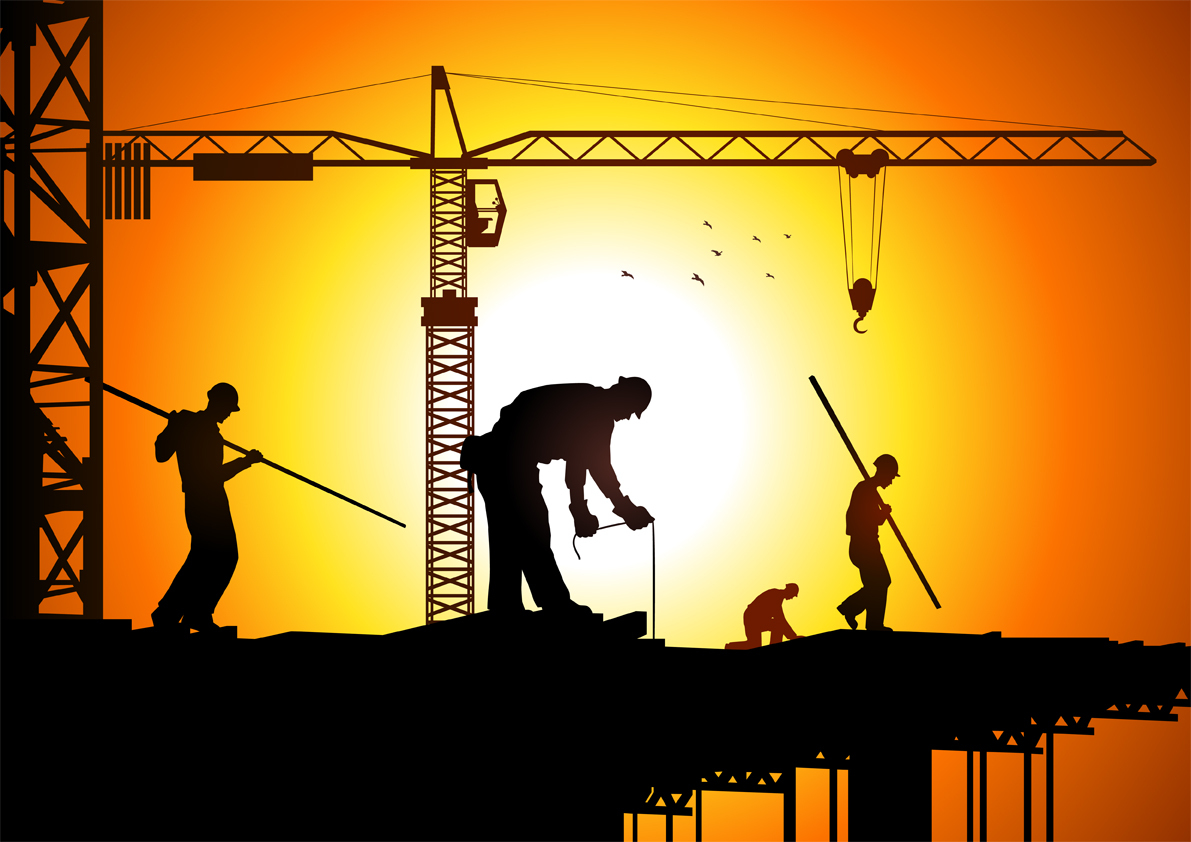Summer Safety Tips for Construction

Activity in the construction industry is very high during summer, but working under extreme heat can be dangerous. Construction safety measures must be followed regardless of the season. However, it’s important to understand heat risks, and the necessary precautions to keep everyone safe during summer.
Heat Risks in Construction Sites
The two most significant summer risks for construction workers are heat stroke and heat exhaustion. Both conditions can have severe consequences if left unattended, and it’s important to provide learning material for everyone on site. This way, they will know the symptoms and signs for each case, and how to react.
Heat Stroke
In simple terms, heat stroke occurs when the body has overheated to a point where it is unable to cool down by itself. If heat stroke is not treated on time, it can cause damage to the brain, kidneys and heart, even leading to death in severe cases. The main symptoms are confusion, fever, nausea, vomiting, red skin, rapid heart rate and headaches.
Heat Exhaustion
Heat exhaustion is a less extreme version of a heat stroke. It also happens when the body overheats, but the symptoms are less severe. Heat exhaustion can turn into heat stroke if untreated. The main symptoms are intense sweating, goosebumps, cool skin, fatigue, pulse alteration, nausea, headache and low blood pressure.
Manage your building project efficiently and prevent workplace accidents.
In 2011, the Occupational Safety and Health Administration (OSHA) designed a program to prevent risks like heat stroke and heat exhaustion, called the Heat Illness Prevention Campaign. The purpose is to educate construction workers and employers about the risks of working under extreme heat. The main goal of this campaign is to create awareness about the three basic elements to prevent heat illness: water, rest, and shade.
Construction Safety Recommendations for Summer

Having discussed the risks of working with extreme heat and the symptoms of heat illnesses, here are some safety recommendations for construction projects during summer.
Tip #1 Create Awareness: First of all, it’s important for the entire team to be aware of the threats when working under extreme heat. Educate the team about the dangers of heat stroke and heat exhaustion, their symptoms, and how to prevent them. Safety managers are responsible for implementing heat safety rules, and making sure everyone is following them.
Tip #2 Smart Scheduling: A project schedule that considers the temperature and humidity can benefit both the employer and workers. An effective way to minimize work during the hottest hours is by programming the most intense activities very early in the morning, or late in the afternoon. Another planning tip is scheduling indoor construction for the hottest days, and outdoor tasks for less extreme days. If the schedule cannot be arranged in a way that extreme temperature is avoided, the next recommendations are crucial.
Tip #3 Supply Drinking Water: The best way to stay cool in construction sites during summer is by drinking plenty of water. Hydration is key in preventing heat illness, since a well hydrated body will sweat normally and regulate its core temperature. Provide a well-stocked supply of water for everyone, make sure all workers are drinking water throughout the day, organize drink breaks every 15-20 minutes, and discourage sugary beverages like sodas and energy drinks.
Tip #4 Resting Time: Schedule plenty of breaks during hot summer days. Although this slows down the project, it protects workers from heat illness and its life-threatening consequences. Project conditions are improved for workers, and contractors are less likely to face hospital expenses. Breaks at reasonable intervals will help keep a steady pace and high performance, while protecting workers.
Tip #5 Provide Shade: Breaks are even more effective if they are taken in spaces with shade, such as trees, tents and awnings. Recommendations 3, 4 and 5 can be achieved simultaneously, by programming breaks in shaded spaces with water supplies. The risk of heat illness will be reduced significantly, and workers will be happier and safer.
Tip #6 Summer Safety Gear: Personal protective equipment must be worn at all times in construction sites. During summer, make sure that workers have clothes that protect them from the job hazards but also relieve them from heat. The recommendation is using mesh safety vests, nape protection, and clothing that is light and breathable.

Michael Tobias
Michael Tobias, the Founding Principal of NY Engineers, currently leads a team of 50+ MEP/FP engineers and has led over 1,000 projects in the US
Join 15,000+ Fellow Architects and Contractors
Get expert engineering tips straight to your inbox. Subscribe to the NY Engineers Blog below.



